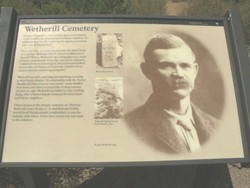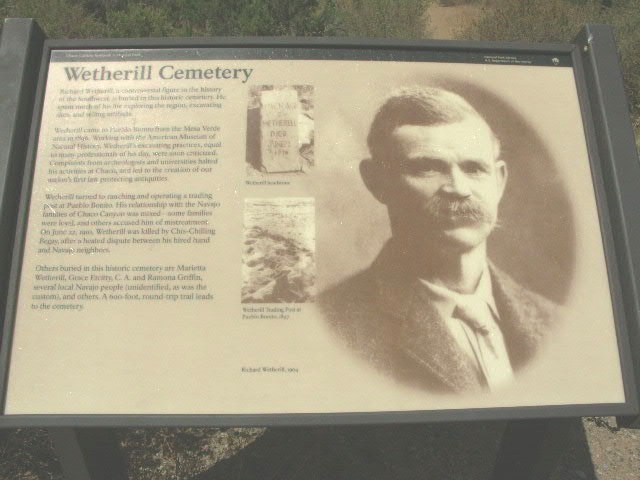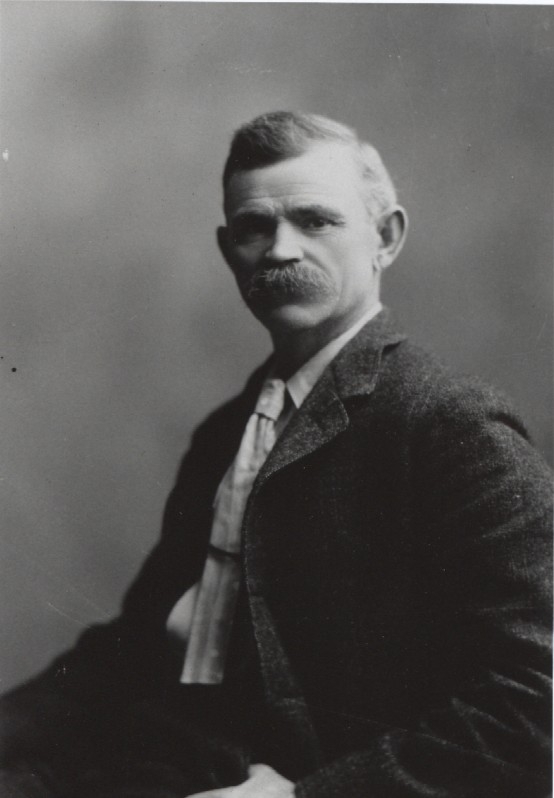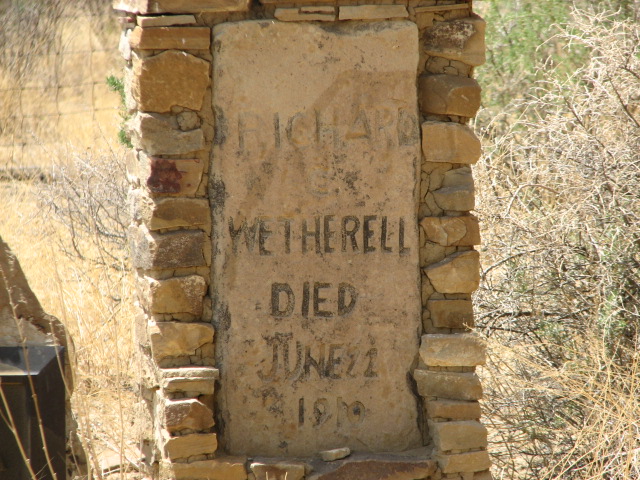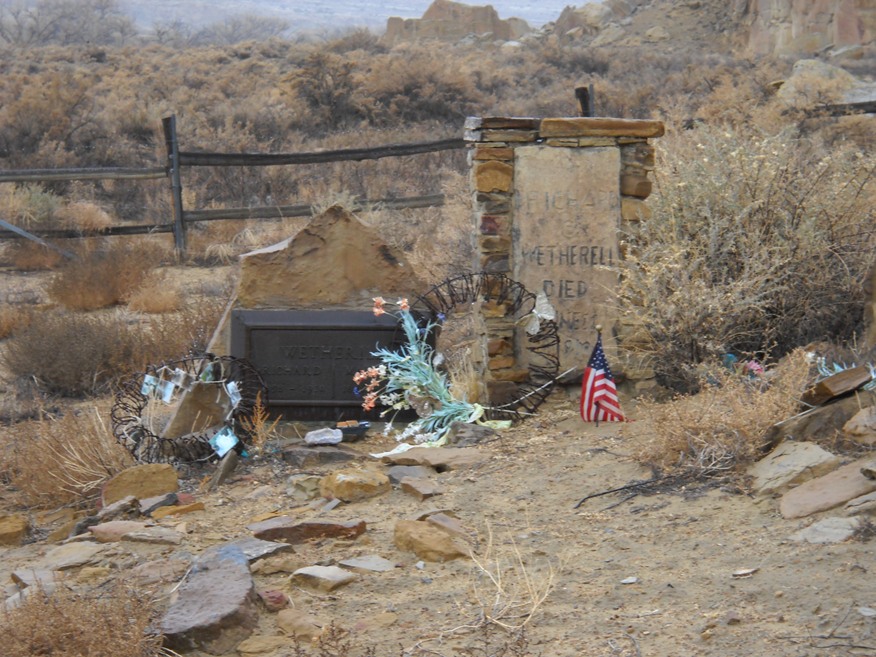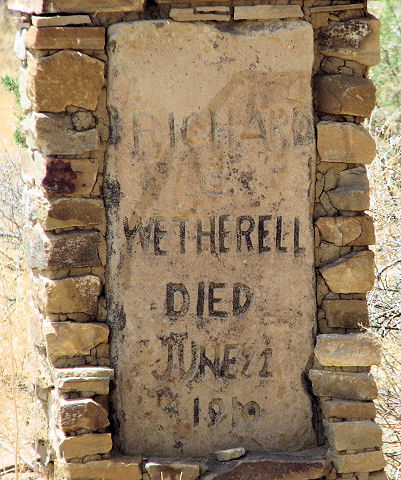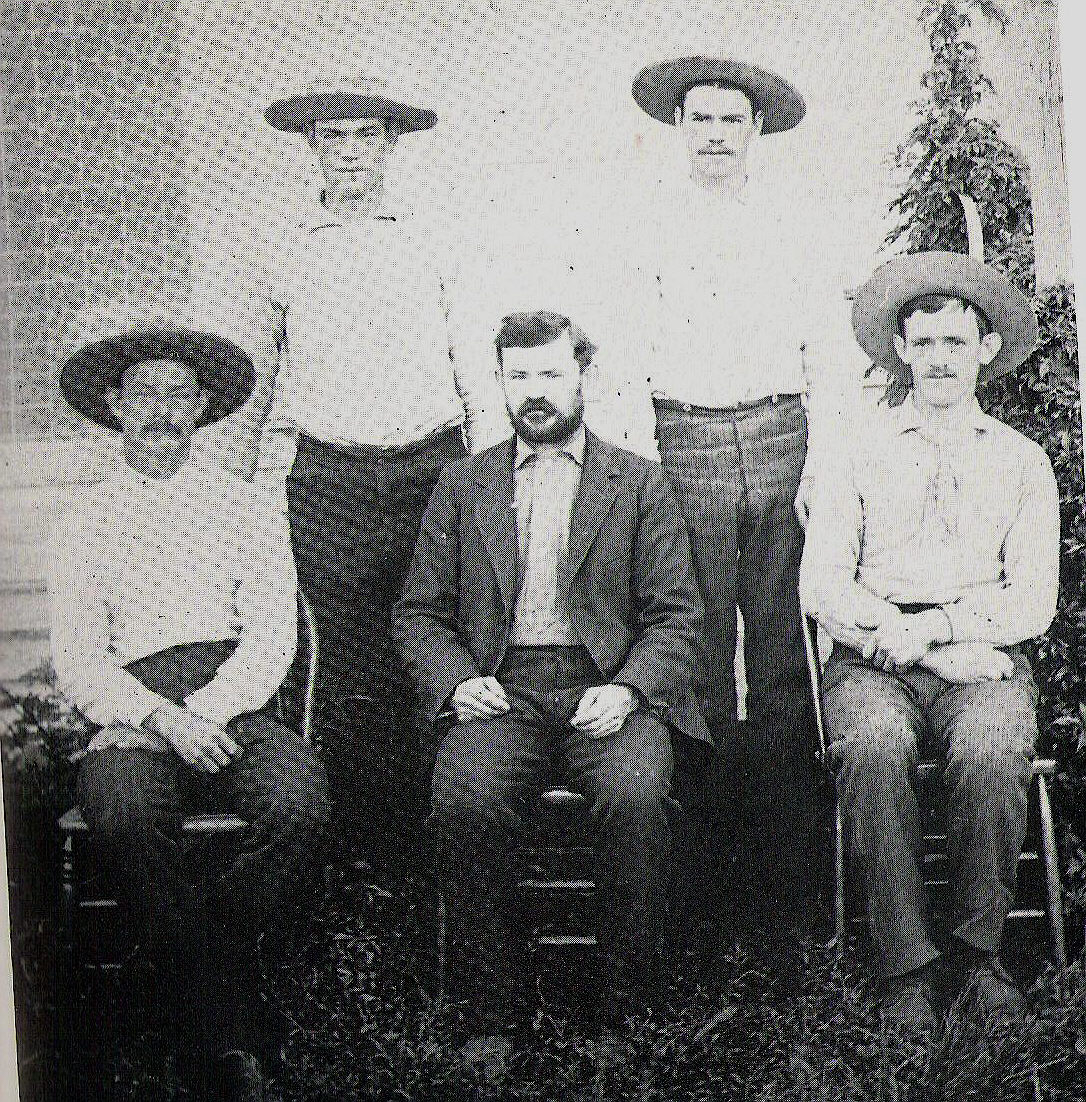On November 29,1893 Richard Wetherill led an exploring expedition out of Mancos, Colorado toward Grand Gulch. After a short stop in Bluff City, Utah for supplies the expedition headed north on December 11. Just six days later Richard wrote: "Our success has surpassed all expectations. In the cave we are now working we have taken 28 skeletons and two more in sight and curious to tell, and a thing that will surprise the archaeologists of the country is the fact of our finding them at a depth of five and six feet in a cave in which there are cliff dwellings and we find the bodies under the ruins, three feet below any cliff dweller sign. They are a different race from anything I have ever seen. They had feather cloth and baskets, and no pottery-six of the bodies had stone spear heads in them." In these words Richard Wetherill announced that he had discovered an entirely new culture previously unknown to anyone. It was obvious that Richard's discovery preceded the Cliff Dweller culture as the excavation was well below the Cliff Dwellers. One of the expedition members coined the term "Basket Makers" after Richard suggested that the "Basket People" needed an official name.
Fish Mouth Cave on Comb Ridge was once thought to have been the site of the discovery of the Basketmakers, but this has been disproved. Since some of Wetherill's records are missing and/or conflicting, the location of Cave 7 was uncertain until 1990 when Winston Hurst and others reexamined all of Wetherill's surviving records and photos as a part of the Wetherill-Grand Gulch Research Project. The rather nondescript cave is about 30 miles north of Bluff in a small side canyon of Cottonwood Wash.
Winston Hurst and Christy Turner II wrote, "Wetherill has not been given all the credit he deserves for first discovering a relative chronology in Southwest sites, that is the Basketmaker-Pueblo sequence based on the Cave 7 stratigraphy." Also little noted, even today, is the evidence that he found of brutal murder during Basketmaker times. Two thirds of the 90 or so burials found in Cave 7 displayed evidence of perimortem trauma, and Wetherill reported finding projectile points or knives mingled with the bones of 20 more skeletons. After reexamining the bodies from Cave 7, Turner wrote, "The first stratigraphically-identified Basketmakers had been massively beaten, mutilated, scalped and probably tortured." Indeed, the Cave 7 burials seem to evidence a massacre. Basketmaker burials from other places also have demonstrated signs of violence.
Richard Wetherill was also the discoverer of Kiet Siel near Kayenta, Arizona. Richard, his brother, Al Wetherill and Charles Mason crossed the San Juan river south near Bluff City, Utah and entered the wasteland on the northern end of the beautiful Monument Valley, Utah. The three men worked for the first two months of 1895 wandering and exploring the high caves and pueblo sites until they turned up Laguna Creek and followed it into Tsegi Canyon. Had the group continued straight ahead for a mile or so they would have discovered Betatakin, which was a ruin in an immense cave. It was discovered fourteen years later by Richard's brother, John Wetherill. Instead Richard chose to turn off to the right and follow the center branch to its head.
Neephi, Richard's lead mule a "fat and rolicky" animal broke her hobble the night the group stopped and camped and caused Richard to look for her. He rounded a bend and glimpsed Kiet Siel. It came into view without warning; not even a potsherd was evident in the trash heap below the ruin. Richard Wetherill married Marietta Palmer on December 12, 1896 in Sacramento, California. Later that summer he began excavations in Chaco Canyon at Pueblo Bonito. In 1898 Richard and Marietta moved permanently to Chaco Canyon, New Mexico to continue exploring. To support themselves, they established a trading post on the West Side of Pueblo Bonito. June 22, 1910, Richard Wetherill was shot to death , apparently by an angry Navajo, Chis-chilling Begay, who was convicted of his murder.
On November 29,1893 Richard Wetherill led an exploring expedition out of Mancos, Colorado toward Grand Gulch. After a short stop in Bluff City, Utah for supplies the expedition headed north on December 11. Just six days later Richard wrote: "Our success has surpassed all expectations. In the cave we are now working we have taken 28 skeletons and two more in sight and curious to tell, and a thing that will surprise the archaeologists of the country is the fact of our finding them at a depth of five and six feet in a cave in which there are cliff dwellings and we find the bodies under the ruins, three feet below any cliff dweller sign. They are a different race from anything I have ever seen. They had feather cloth and baskets, and no pottery-six of the bodies had stone spear heads in them." In these words Richard Wetherill announced that he had discovered an entirely new culture previously unknown to anyone. It was obvious that Richard's discovery preceded the Cliff Dweller culture as the excavation was well below the Cliff Dwellers. One of the expedition members coined the term "Basket Makers" after Richard suggested that the "Basket People" needed an official name.
Fish Mouth Cave on Comb Ridge was once thought to have been the site of the discovery of the Basketmakers, but this has been disproved. Since some of Wetherill's records are missing and/or conflicting, the location of Cave 7 was uncertain until 1990 when Winston Hurst and others reexamined all of Wetherill's surviving records and photos as a part of the Wetherill-Grand Gulch Research Project. The rather nondescript cave is about 30 miles north of Bluff in a small side canyon of Cottonwood Wash.
Winston Hurst and Christy Turner II wrote, "Wetherill has not been given all the credit he deserves for first discovering a relative chronology in Southwest sites, that is the Basketmaker-Pueblo sequence based on the Cave 7 stratigraphy." Also little noted, even today, is the evidence that he found of brutal murder during Basketmaker times. Two thirds of the 90 or so burials found in Cave 7 displayed evidence of perimortem trauma, and Wetherill reported finding projectile points or knives mingled with the bones of 20 more skeletons. After reexamining the bodies from Cave 7, Turner wrote, "The first stratigraphically-identified Basketmakers had been massively beaten, mutilated, scalped and probably tortured." Indeed, the Cave 7 burials seem to evidence a massacre. Basketmaker burials from other places also have demonstrated signs of violence.
Richard Wetherill was also the discoverer of Kiet Siel near Kayenta, Arizona. Richard, his brother, Al Wetherill and Charles Mason crossed the San Juan river south near Bluff City, Utah and entered the wasteland on the northern end of the beautiful Monument Valley, Utah. The three men worked for the first two months of 1895 wandering and exploring the high caves and pueblo sites until they turned up Laguna Creek and followed it into Tsegi Canyon. Had the group continued straight ahead for a mile or so they would have discovered Betatakin, which was a ruin in an immense cave. It was discovered fourteen years later by Richard's brother, John Wetherill. Instead Richard chose to turn off to the right and follow the center branch to its head.
Neephi, Richard's lead mule a "fat and rolicky" animal broke her hobble the night the group stopped and camped and caused Richard to look for her. He rounded a bend and glimpsed Kiet Siel. It came into view without warning; not even a potsherd was evident in the trash heap below the ruin. Richard Wetherill married Marietta Palmer on December 12, 1896 in Sacramento, California. Later that summer he began excavations in Chaco Canyon at Pueblo Bonito. In 1898 Richard and Marietta moved permanently to Chaco Canyon, New Mexico to continue exploring. To support themselves, they established a trading post on the West Side of Pueblo Bonito. June 22, 1910, Richard Wetherill was shot to death , apparently by an angry Navajo, Chis-chilling Begay, who was convicted of his murder.
Inscription
Marion Jane Wetherill born August 27, 1907 was the daughter of Richard Wetherill b. 1858. Richard had five children Ruth, Marion, Elizabeth, Robert and Richard. Ruth died almost a year to the day her father Richard, was shot and killed at Chaco Canyon, NM in 1910.
